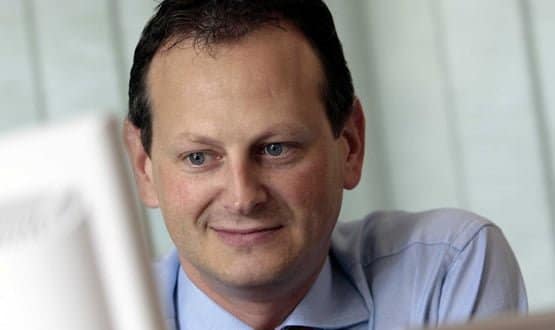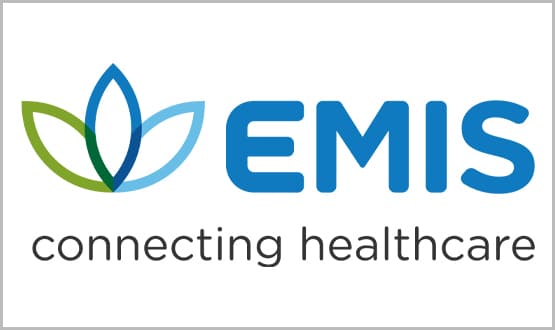EHI interview: Sean Riddell
- 23 April 2013

When Sean Riddell started work at Emis in 1989, he joined a GP IT industry in which there dozens of “mom and pop outfits”.
Primary care computing was in its infancy and GP systems were given away free in return for access to the data created by them, which was then sold for market research.
Emis was developing a system built around Intel’s relatively new, 32-bit 386 microprocessor, when many of its competitors felt that the older, 16-bit 286 was still up to the job.
The company also insisted that all of its customers had an uninterruptable power supply and a modem – another foreign idea.
“We realised people were going to be dependent on their software so we had to be able to do remote diagnostics,” he explains.
“These days, you wouldn’t ever put a healthcare IT system in without a modem or ability to virtually immediately patch the software – and we were doing it years ago.”
AIMing high
Riddell announced that he was stepping down as the chief executive of Emis Group in February. He remains a non-executive director on the Emis board, but says he wants to give more time to his wife and family.
“When you work in an executive role within healthcare computing it’s all-encompassing. If you don’t give 100% focus, you are actually letting down your customers,” he says.
The company’s chief administrative officer, Chris Spencer, is the interim chief executive while the board recruits a replacement.
That replacement will join a very different company to the one Riddell joined, since Emis has grown considerably over the past two decades.
In March 2010, it floated on the London Stock Exchange’s Alternative Investment Market, with a post-float valuation of around £200m.
At the time, the company said that its strategy for growth would involve targeting potential new GP practice customers, while providing additional products and services to GPs and other practice staff.
A key part of its strategy is to roll out its ‘next generation’ system, Emis Web, to both new and existing customers. As of February, some 1,600 practices were live with the system, which Emis has now made available as a mobile solution.
With the Emis Web roll-out well under way, the company has also found itself involved in a growing number of information sharing schemes based on the Medical Interoperability Gateway that it developed with INPS in a joint venture called Healthcare Gateway.
Although Emis is best known for its GP systems, when Riddell is asked for his own high and low points he lists the development of Emis Patient Access and patient.co.uk as highs.
The first gives patients access to online services at their local practice. Depending on what the practice chooses to make available, this can involve appointment booking, arranging repeat medications, sending secure messages, seeing the medical record and updating key details.
Patient.co.uk, meanwhile is an advice and information site, with symptom checkers, forums for people living with long term conditions, and an advice blog; all of which is also available through a mobile app.
Facing down challenges
Less surprisingly, Riddell says the biggest challenge of his career came from the National Programme for IT in the NHS.
In its very early days, the first director general of NHS IT, Richard Granger, made it known that he was not too impressed with the GP-IT cottage industry. Famously, he described Emis as “a four letter word.”
When it placed its massive local service provider contracts, NPfIT envisaged that GP systems – as well as acute systems – would be swept away and replaced with ‘strategic’, healthcare community-wide systems.
In the event, this didn’t happen. Emis pulled out of the programme as early as 2004, while GPs went on to secure a guaranteed “choice” of GP IT system through their ‘new’ GP contract, and the development of those strategic systems ran hopelessly late.
CSC, for example, failed to deliver the Lorenzo Release 4 that was supposed to go into GP practices across the North, Midlands and East – although it delivered TPP systems as ‘interim’ solutions across these regions – and recently announced that it was pulling out of the GP IT market altogether.
“We were the main system supplier that said no to the [programme],” Riddell says. “The approach of trying to deliver a single monolithic system is absolutely flawed.
“You need to do it with best-of-breed systems that are directed in a very granular way to do the job that the clinician needs.
“We were talking about interoperability back in 2002. We said we should use a connect-all policy, have open APIs in all systems, ensure mobility of data, and put in place a most dynamic partners programme.”
Riddell believes “GP-land” is now pretty much there in terms of interoperability – especially as the revised version of the GP Systems of Choice framework is, apparently, going to mandate open interfaces.
But he questions why the vendors of community and hospital systems do not have open APIs to allow people to start “joining up the dots”.
He argues that the more Emis has opened up its APIs to other providers, the more commercially successful it has become.
“I hope GPSoC a sign of things to come in other areas,” he says. “People are talking and the right words are coming out; it’s action that’s needed next.”
Transformation in the NHS
Riddell has seen much change in the structures in the NHS. While he sees a need for a management tier, he says one of the health service’s biggest problems is that clinical change tends to be driven by political imperatives.
“The hope I have is that the [current] changes – the formation of clinical commissioning groups – starts breaking some of that political interference within healthcare,” he says.
“The main thing I would like to see happen is that clinicians start driving forward how you deliver that connected care world, rather than bureaucrats and administrators.”
Within that more connected healthcare world, Riddell sees a key role for IT. He argues it is “obvious” that healthcare is improved when records are held electronically.
However, he says the sharing of the information that they needs to be done with respect for the special relationship between a patient and their GP, or other medical provider.
Emis funds a not-for-profit partnership with Nottingham University called QResearch, which Riddell cites as a model for use of patient information for secondary purposes.
“Being able to access big data for healthcare research and financial geographic planning of healthcare is absolutely essential, but would you want to breach people’s confidence? – absolutely not,” he says.
“We need to be doing this in ways where you can use the big data for big benefit, but not every infringe on personal liberties.”




